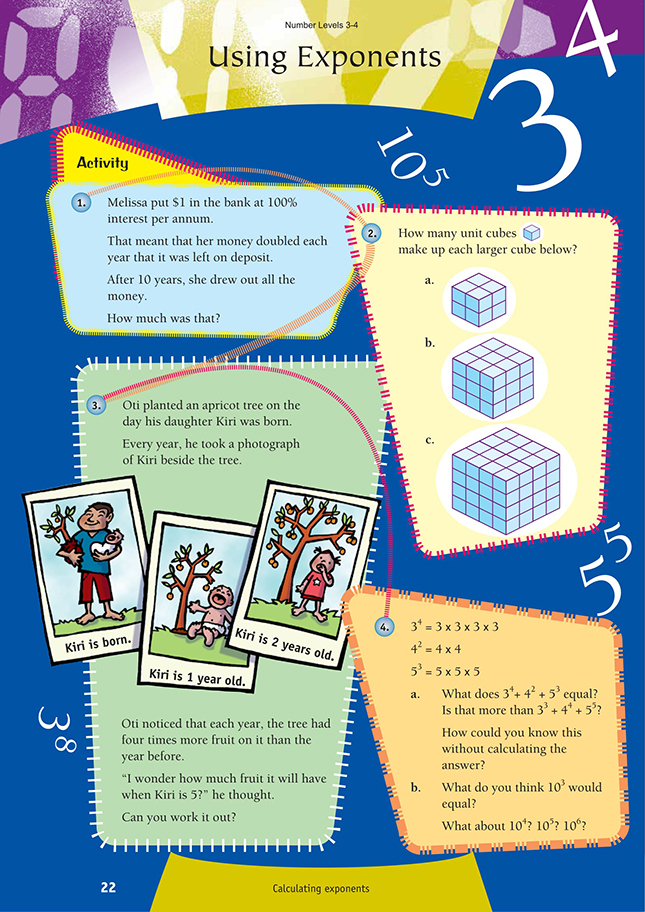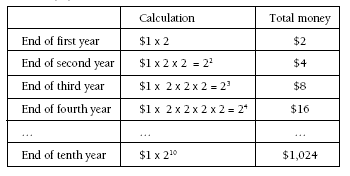This is a level 5 number activity from the Figure It Out series. It relates to Stage 8 of the Number Framework.
A PDF of the student activity is included.
Click on the image to enlarge it. Click again to close. Download PDF (414 KB)
explore exponents
FIO, Level 3-4, Number, Book 1, Using Exponents, page 22
These activities will familiarise the students with exponents (to the power of) and the way they are written. You could begin by discussing the concept of exponential growth and how rapid it is. If the students have some understanding of this, they will be better able to check the reasonableness of their answers. A good way to demonstrate this is to have the students line up on a rugby field sideline. The first student walks two paces, the next twice as far (2 x 2 = 4 paces), the next 2 x 2 x 2 = 8 paces, and so on. When the students stand in position, it gives a human graph.
In question 1, Melissa doubles her money each year. (You may want to point out to the students that this is not a realistic scenario although it is a good way to understand the maths involved.) This can be shown on a table. Note the shorter way of writing the calculation, for example, 24. The exponent, 4, indicates how many times 2 is multiplied by itself.
In question 2, the students will be finding the volume, measured in unit cubes, of the larger cubes. The students will probably be used to finding the 2-D area of rectangles and the 3-D volume of rectangular prisms by multiplying the side lengths. They do the same type of calculation for this exercise. Encourage them to use exponent notation (for example, 33).
Question 3 involves powers of 4. The students could set the problem out in a table, as they did in question 1, but by now they should be able to go directly to writing the problem as 45 or 4 x 4 x 4 x 4 x 4 = .
Question 4 tests the students’ understanding of exponents. Having done the previous questions, they should recognise that 33 + 44 + 55 must be bigger than 34 + 42 + 53 because the exponents are bigger for the last two numbers.
As an extension activity, you could show the students how to calculate exponents on a calculator.
This is a lot quicker than multiplying a number by itself several times. The exponent key is marked xy. So to calculate 45, you press:
Answers to Activity
1. $1,024 ($1 x 2 x 2 x 2 x 2 x 2 x 2 x 2 x 2 x 2 x 2 or $1 x 210)
2. a. 8 (2 x 2 x 2 or 23)
b. 27 (3 x 3 x 3 or 33)
c. 64 (4 x 4 x 4 or 43)
3. 1 024 (4 x 4 x 4 x 4 x 4 or 45)
4. a. 222. No, it is less (33 + 44 + 55 = 3 408).
The 4 and 5 in the second set have higher powers, which give bigger numbers.
b. 103 = 1 000
104 = 10 000
105 = 100 000
106 = 1 000 000

